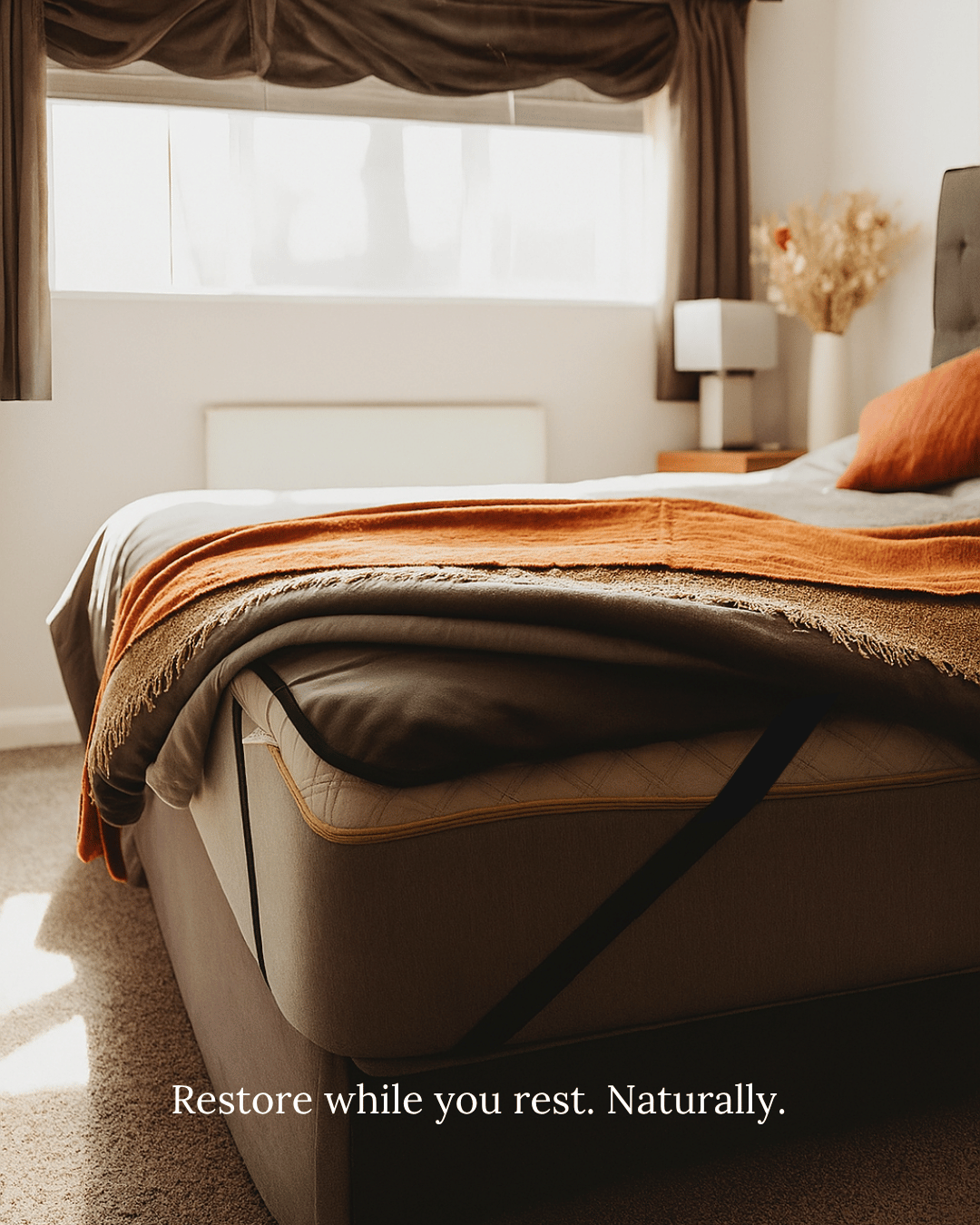Grounding—also called earthing—is becoming more widely embraced as people look for natural ways to support better sleep, reduce inflammation, and improve overall health. As scientific studies continue to explore the benefits of grounding, tools like grounding mats and grounding mattress covers have emerged to help people stay connected to the Earth’s natural energy.
Both products function by linking the body to the Earth’s electrical charge, which may help regulate cortisol, boost immune function, and support healing. But what are the differences between these grounding tools—and which one is the better choice for your wellness routine?
Size, Design & Daily Use
Grounding mattress covers are designed to fit over your entire mattress, allowing for full-body grounding while you sleep. This extended nighttime exposure—typically 6 to 8 hours—is when your body naturally undergoes the most healing and regeneration. A grounding mattress cover offers complete surface contact and is ideal for consistent, uninterrupted grounding throughout the night.
On the other hand, grounding mats are usually smaller in size and are meant to be placed under your feet or on specific body areas, like while sitting at a desk or relaxing. While effective for shorter sessions or targeted grounding, mats don’t offer the same full-body or long-duration benefits as a mattress cover.
Why Longer Grounding Matters
Duration plays a major role in the effectiveness of grounding. The more time your body is connected to the Earth’s energy, the more opportunities it has to neutralize free radicals, lower inflammation, and rebalance neurotransmitters and hormones. This is why grounding during sleep—when your body is already in a healing state—can be especially powerful.
Material Differences
High-quality grounding mattress covers are made with materials like vegan leather infused with conductive silver and carbon fiber. These materials are breathable, skin-friendly, and machine washable—making them both comfortable and practical for daily use.
Grounding mats, while durable, are often made from synthetic materials like rubber or PVC. They’re functional for localized grounding, but don’t offer the same comfort, breathability, or ease of integration into everyday life as mattress covers.
Comfort & Versatility
Mattress covers are more comfortable for extended use, especially overnight. They’re designed to feel like a regular bedsheet and can seamlessly blend into your nighttime routine without requiring any extra steps. Grounding mats, however, may not feel as natural or comfortable when used for hours at a time.
While both grounding tools have their place, mattress covers also win in terms of versatility. They can be used at home or while traveling, fitting any standard bed setup without hassle. Mats are more limited in this regard and are often better suited for short-term grounding, such as during meditation, work, or quick breaks.
Conclusion: The Clear Winner
While grounding mats can be a great option for short, intentional grounding sessions, grounding mattress covers offer a more comprehensive, long-term solution. With full-body contact, overnight use, breathable materials, and optimal comfort, they provide a deeper and more consistent grounding experience.
If you're serious about incorporating grounding into your daily routine, investing in a grounding mattress cover is a powerful way to unlock the full spectrum of earthing benefits. It's the most effortless way to ground consistently—while you sleep.
















